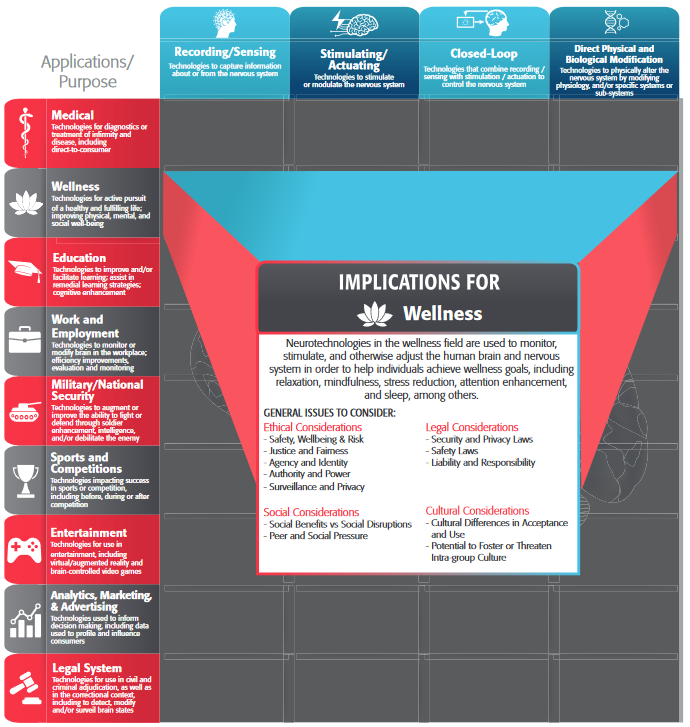In partnership with IEEE Circuits and Systems Society. IEEE Brain Podcast Series special episode with Dr. Jerald Yoo, Associate Professor, Electrical and Computer Engineering, The N.1 Institute for Health at the National University of Singapore. Dr. Yoo shares insights on the benefits of advancing wearable health technology, particularly as it relates to the brain disorders such as seizures and epilepsy.
Improving Communication with the Brain Through Electrode Technologies
Over the past 30 years, bionic devices such as cochlear implants and pacemakers have used a small number of metal electrodes to restore function and monitor activity in patients following disease or injury of excitable tissues. Growing interest in neurotechnologies, facilitated by ventures such as BrainGate, Neuralink, and the European Human Brain Project, has increased public awareness of electrotherapeutics and …
Mapping the Mind’s Eye
26 October 2021, Arizona State University News “Specific areas of the human brain process different functions, such as the auditory cortex for hearing and the olfactory cortex for smell. Among these functional areas, the single largest is devoted to vision. The dominance of the visual cortex may not be surprising given the importance of sight to the human species. But …
IEEE Brain: Future Directions in Consumer Neurotechnology
To add energy to this exciting and growing industry, this workshop is designed to bring together the various groups that are working towards bringing neurotechnology to a much broader consumer audience. Participants will include top scientists developing the next generation of brain imaging and stimulation devices, leading startups translating this research directly to consumers, VCs investing in these companies, and …
Learning from Imaging Data to Model Brain Activity
18 October 2021, IBM Research “In this article, we introduce VanDEEPol, a hybrid AI/mechanistic model to predict brain activity and structure from imaging data. The model significantly boosts predictive accuracy compared to previous methods. By predicting brain activity from relatively sparse imaging data, VanDEEPol may eventually help to detect medical disorders or design brain-computer interfaces.”
Brain-Machine Interfaces: Beyond Decoding
A brain-machine interface (BMI) is a system that enables users to interact with computers and robots through the voluntary modulation of their brain activity. Such a BMI is particularly relevant as an aid for patients with severe neuromuscular disabilities, although it also opens up new possibilities in human-machine interaction for able-bodied people. Real-time signal processing and decoding of brain signals …
Q&A with Dr. Mark Stiles, National Institute of Standards and Technology
In partnership with IEEE Magnetics Society. In this episode, Mark Stiles, an active member of the IEEE Magnetics Society and a fellow at the National Institute of Standards and Technology, shares his insights on the society’s work as it relates to neuroscience and brain-inspired computing technologies. Mark also offers his advice to students and young professionals who might be interested …
Electrophysiologic Monitoring and Modulation of Enteric Nervous Systems
We highlight recent technological and methodological advances in deploying miniaturized technologies that can monitor the spatial electrophysiologic patterns of the visceral nervous system. As an example, we discuss recent developments of thin, stretchable, wireless biosensor patches that can be embedded within routinely used medical adhesives for recording electrophysiologic patterns of the GI tract. We also showcase recent developments in array …
The Challenge and Opportunities of Mapping Cortical Layer Activity
A major outstanding challenge in neuroscience is to integrate across levels of investigation, linking genes, molecules, cells, microcircuits, regions, systems, and behavior. This will require bringing together evidence from sources across different spatial scales—from the microscopic, such as electrophysiological recordings in animals, to the macroscopic, such as conventional neuroimaging in humans. The mesoscale technique of depth-dependent fMRI, or “layer fMRI” …
Dynamical Neuromorphic Systems
In this talk, I aim to show that the dynamical properties of emerging nanodevices can accelerate the development of smart, and environmentally-friendly chips that inherently learn through their physics. The goal of neuromorphic computing is to draw inspiration from the architecture of the brain to build low-power circuits for artificial intelligence. I will first give a brief overview of the …


